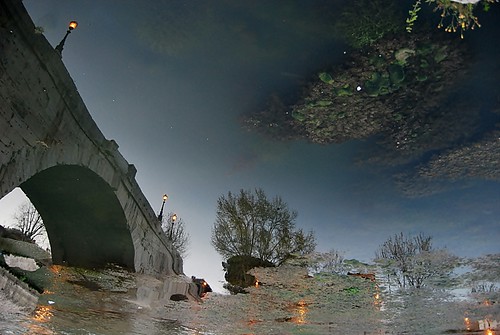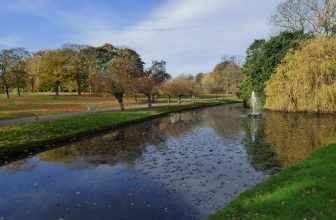

L’Isola Tiberina è un isola a forma di barca che si è formata all’interno del Tevere, la zona dove il fiume scorre attraverso Roma, nei pressi del Campidoglio.
Con circa 270×67 m (più ampia lato), l’isola è famosa per il Tempio di Esculapio, il dio greco della medicina.
C’è una leggenda che una delle sue versioni, dice che dopo la caduta di Tarquinio il Superbo, il popolo romano gettato il corpo nel Tevere, nel punto dove più tardi è laureato presso l’isola, sul corpo deposiPonte Tiberina – Roma – Itália A todos uma boa Páscoatato sul fondo, costruire sarebbe ciottoli e detriti che gradualmente hanno portato alla graduale formazione di questa isola.
Grazie alle sue oscure origini, l’Isola Tiberina era considerata dai Romani come luogo di presentimento in modo che prima della costruzione del Tempio, i residenti si avvicina evitato l’isola, e solo i peggiori criminali sono stati condannati a trascorrere lì il resto della la sua vita.
The Pons Cestius (Italian: Ponte Cestio, meaning "Cestius’ Bridge") is a Roman stone bridge in Rome, Italy, spanning the Tiber to the west of the Tiber Island. The original version of this bridge was built around the 1st century BC (some time between 62 and 27 BC), after the Pons Fabricius, sited on the other side of island. Both the ponti Cestius and Fabricius were long-living bridges; however, whereas the Fabricius remains wholly intact, the Ponte Cestio was partly dismantled in the 19th century, with only some of the ancient structure preserved.
The Pons Cestius is the first bridge that reached the right bank of Tiber from the Tiber Island. Whereas the island was long connected with the left bank of the Tiber and the heart of ancient Rome, even before the pons Fabricius, the right bank (Transtiber) remained unconnected until the Cestius was constructed. Several prominent members of the Cestii clan from the 1st century BC are known, but it is uncertain which of them built this bridge.[1]
The Tiber running high, December 2008
In the 4th century the Pons Cestius was rebuilt by the Emperors Valentinian I, Valens and Gratian and re-dedicated in 370 as the Pons Gratiani. The bridge was rebuilt using tuff and peperino, with a facing of travertine. Some of the rebuilding material came from the demolished porticus of the nearby Theatre of Marcellus.[2]
During the building of the walls along the river embankment in 1888–1892, the bridge had to be demolished and rebuilt, as the western channel was widened from 48 to 76 meters. The ancient bridge, which had two small arches, was simply not long enough. A new bridge, with three large arches, was constructed in its stead, with its central arch reusing about two-thirds of the original material.
The Pons Cestius (Italian: Ponte Cestio, meaning "Cestius’ Bridge") is a Roman stone bridge in Rome, Italy, spanning the Tiber to the west of the Tiber Island. The original version of this bridge was built around the 1st century BC (some time between 62 and 27 BC), after the Pons Fabricius, sited on the other side of island. Both the ponti Cestius and Fabricius were long-living bridges; however, whereas the Fabricius remains wholly intact, the Ponte Cestio was partly dismantled in the 19th century, with only some of the ancient structure preserved.
The Pons Cestius is the first bridge that reached the right bank of Tiber from the Tiber Island. Whereas the island was long connected with the left bank of the Tiber and the heart of ancient Rome, even before the pons Fabricius, the right bank (Transtiber) remained unconnected until the Cestius was constructed. Several prominent members of the Cestii clan from the 1st century BC are known, but it is uncertain which of them built this bridge.[1]
The Tiber running high, December 2008
In the 4th century the Pons Cestius was rebuilt by the Emperors Valentinian I, Valens and Gratian and re-dedicated in 370 as the Pons Gratiani. The bridge was rebuilt using tuff and peperino, with a facing of travertine. Some of the rebuilding material came from the demolished porticus of the nearby Theatre of Marcellus.
During the building of the walls along the river embankment in 1888–1892, the bridge had to be demolished and rebuilt, as the western channel was widened from 48 to 76 meters. The ancient bridge, which had two small arches, was simply not long enough. A new bridge, with three large arches, was constructed in its stead, with its central arch reusing about two-thirds of the original material.
Posted by Dont´comment the same photo on 2012-04-10 16:43:08
Tagged: , Pontes , Saariy’sQualityPictures , ringexcellence , Remember That Moment Level 1 , FlickrsTrueReflection_1






